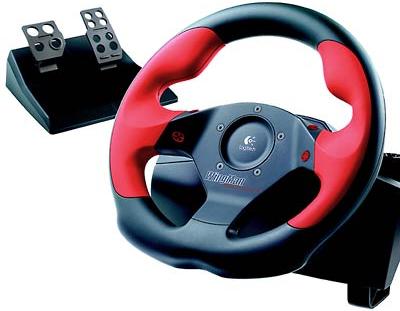Some people may have noticed the presence of two new firmwares since GIMX 4.0: EMUG27PS3 and EMUT300RSPS4. There is also another new firmware in the git repository: EMUG29PS4. These firmwares can be used with the DIY USB adapter. Many thanks to tps and InhexSTER for helping me implement these firmwares!
As it may not be obvious, these firmwares have the following purposes:
- EMUG27PS3: emulate a Logitech G27 wheel to use with a PS3
- EMUT300RSPS4: emulate a Thrustmaster T300RS wheel to use with a PS4
- EMUG29PS4: emulate a Logitech G29 wheel to use with a PS4.
For now, only controls can be used. But force feedback support is coming! This is possible thanks to the following findings:
- the DS4 can be used as an authentication source for PS4 wheels
- the PS3 and the PS4 send FFB data to the Logitech wheel using the FFB protocol that Logitech published here
This means that it is possible to forward FFB data to almost any Logitech wheel including my old Momo racing wheel 🙂
My current work is to make a communication layer to manage Logitech wheels, that are standard HID devices. One key feature of this communication layer is to support asynchronous transfers, which allows to initiate transfers without waiting (blocking) for the results. This is the only way to efficiently process inputs from multiple devices at the same time (one thread per device is not efficient to me). This communication layer also has to be cross-platform (Linux and Windows). GIMX already talks to HID devices using the hidapi library, but this library does not support asynchronous transfers (this is the reason why GIMX does not support rumble with GPP/Cronus/Titan devices). After realizing that no library was providing this, I decided to write my own one, that uses overlapped IO in Windows, and the hidraw interface in Linux. It turned out that the hidraw interface does not support asynchronous writes, which forced me to use the libusb library instead. When using the libusb library, the kernel drivers are detached (unloaded), including the driver that parses HID input packets and translates them into input events (i.e. joystick buttons and axes). This means that GIMX has to do this job, which may be a time consuming development considering each Logitech wheel can have a different HID input format.
There is another non-trivial task that I’ll have to work on. I was thinking that the bInterval value for a USB interrupt out endpoint would restrict the USB host from sending more than one transfer each bInterval period on this endpoint. But in fact a USB device can accept more than that: the G29 has a bInterval of 5ms for its interrupt out endpoint, but it can take at least one out report each 4ms; the Momo racing has a bInterval of 10ms for its interrupt out endpoint, but it can take at least one out report each 8ms. Therefore, changing the bInterval for the interrupt out endpoint of the EMUG29PS4 firmware would not allow to work-around the mismatch of the out report period (I tried it before realizing that fact, and it made my PS4 randomly crash!). This means that I can’t forward all interrupt out transfers to my Momo racing wheel: I have to drop or combine some transfers without altering the FFB effects.

